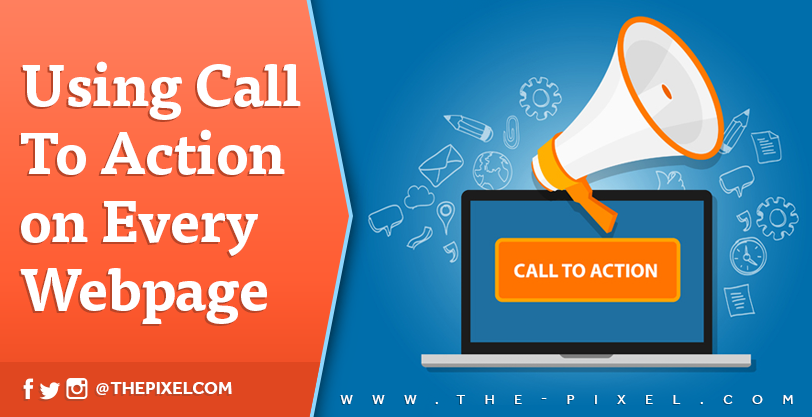Calls to Action (CTAs) Tips That Increase Conversion Rates
Calls to Action (CTAs) Tips That Increase Conversion Rates
Give your CTAs the attention they deserve to prompt your audience into taking the action you desire.
Calls-to-action (CTAs) can be highly effective for boosting conversions, but they don’t work if you don’t use them. Small Biz Trends reports 70 percent of small business B2B websites lack CTAs, which means they’re missing out on many phenomenal opportunities. Check out some tips for giving your CTAs the attention they deserve to prompt your audience into taking the action you desire.
Figure Out Your Goal
The first thing you need for an effective CTA is to be clear on what you want your audience to do. If you’re not sure, you can bet they won’t be sure, either. Do you want people to read your blog? Sign up for your newsletter? Download your e-book? Pinpoint your overall objective.
Use Strong Language
Start your CTA with a strong command verb, such as “buy,” “download,” or “subscribe.” This gives your audience clear direction right from the get-go. Also keep in mind five words known for being particularly persuasive:
- Free
- New
- Bonus
- Because
- Instantly
- You

Stir up Emotion
Logic may be well and good for performing tasks analyzing statistics, but emotions are the real reason people buy. Tapping into emotion works in all types of sales copywriting, CTAs included. When it comes to the emotions to target, enthusiasm and curiosity are both solid choices.
Enthusiasm
Getting your audience excited can be done with strategic use of the exclamation point or painting a perfect picture of what can happen if they follow your CTA. “Book your dream vacation now” is a good example of the latter.
Curiosity
Piquing your audience’s curiosity involves getting them interested enough to click to find out what’s on the other side. Using a type of cliffhanger can do the trick, presenting a situation in which the audience must click to find out how the story ends.
Examples here can include CTAs like: “How losing our biggest client resulted in our biggest month in sales,” or “See how easy our software really is.”
Providing a reason for people to follow your CTA means pointing out what’s in it for them. That’s where the persuasive words like “free,” “bonus,” “new,” and “because” come into play.
Outline the benefits people will get from taking the action you’re requesting. Here’s your chance to showcase the unique selling points of your product or service, or how either one will make your visitors’ lives easier.
Framing your CTA as a solution works well, especially if you add a bit of foreshadowing in a three-step process:
- Present the problem
- Aggravate the problem
- Offer the solution in your CTA
An example here would be something like: “Computer running slower than molasses? It’ll only get worse as your system becomes more bogged down. Fix it with our speedy system software now.”
Create Urgency
We live in a world of instant gratification, and you can capitalize on that fact by creating a sense of urgency with your CTA. Words like “now” and “instantly” come into play here.
When you’re attempting to create quick action, however, you need to deliver what you promise just as quickly. This especially applies to digital items or access that people expect to get instantly if they click on your CTA.
Don’t promise “Instant Access to User Tools” if visitors click, only to have their click lead them to a lengthy form they must complete and five pages of sales spiels they must muddle through to get to those tools. That tactic will backfire, well, instantly.
Focus on FOMO and the Urge to Belong
Another inherent human trait is the urge to belong. People don’t want to be left out of the crowd or miss out on what’s going on. In fact, fear of missing out (FOMO) is one of the main reasons teens are so glued to their smartphones.
FOMO and the urge to belong can be highly effective motivators for CTAs. Those that mention one-day sales or limited supplies can take advantage of FOMO. Those that mention the thousands of people who have already hopped on board with whatever you’re offering can draw out the urge to belong.
Be Clear and Concise
Although you have an extensive list of strategies to help strengthen your CTA, you still want your request to be straightforward. Yes, creativity is allowed, but you don’t want to get so creative that your audience has no clue about what you want them to do. Steer clear of flowery language and extensive explanations that can cause your audience to get lost.
If you want someone to leave comment, for instance, write “Leave a comment.” Don’t write something like: “We all have valuable opinions and viewpoints, and my blog encourages each and every one of them. If you are like me and many other readers, you may wish to share those viewpoints with the world.”
Did you know what to do after that last CTA? Neither did we. But we do know such ambiguity and other CTA faux pas are not likely to happen if you put these strategic tips into action.
Hire ThePixel to build your next website!
Since our founding in 2008, we’ve created and launched many types of business websites. Over the last decade and we’ve learned a thing or two! That’s why we’re masters of our craft, let us help you build the website of your dreams – one that generates traffic, leads and conversions.
Are you ready to start? If yes, contact ThePixel and one of our representatives will guide you through the website phases and how the process works either by a Zoom Meeting or phone.


